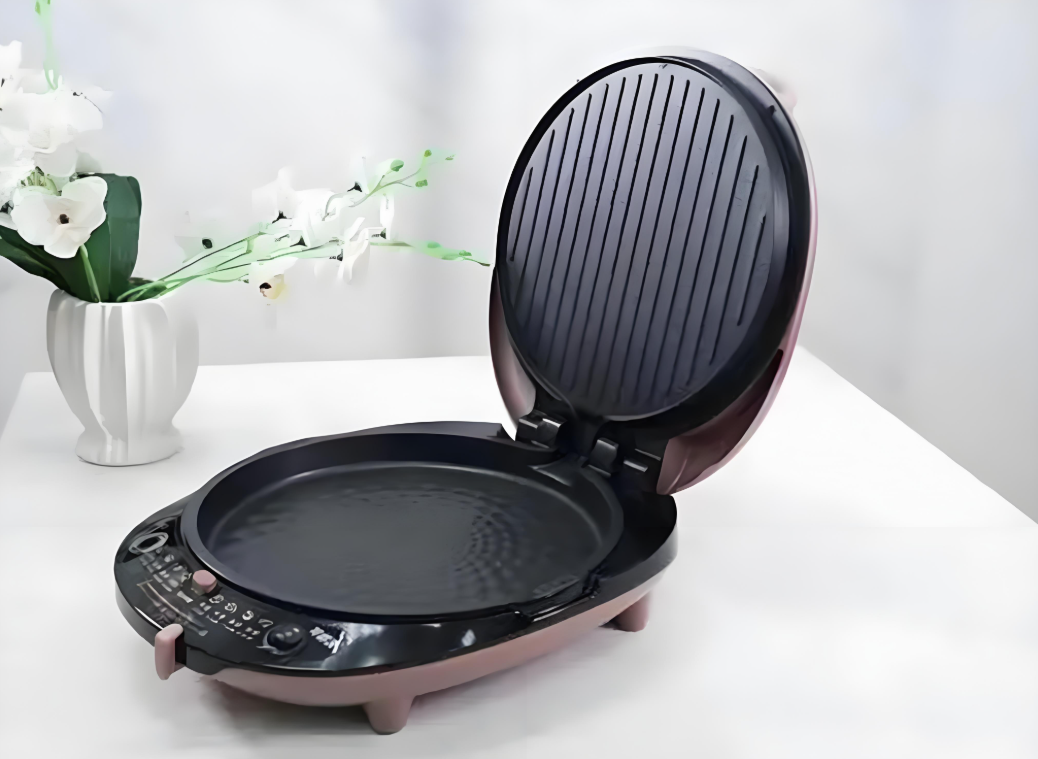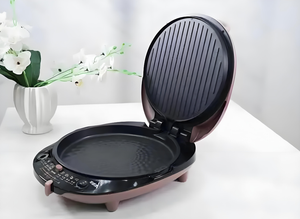
Electric pancake machine inspection methods and standards guide Inspection and Audit Services for Warehousing and Factory Inspection
The electric pan, as a commonly used kitchen appliance, its quality directly affects the safety of use and the cooking effect. To ensure that the electric pan products meet the national electrical safety standards and customer requirements, a full-process quality control system from component procurement, production process to finished product delivery must be established. This article will, based on the structural characteristics and usage scenarios of the electric pan, systematically introduce its classification, inspection items, inspection standards, and factory inspection review points, providing professional guidelines for quality inspectors, purchasers, and production enterprises.
I. Classification and Quality Focus Points of Electric Fryers
(1) Classification by Structural Design
Floating-type electric fryer: The gap between the upper and lower heating surfaces can be automatically adjusted. Special attention should be paid to the stability and uniformity of the floating structure.
Fixed electric griddle: The heating gap is fixed. It is necessary to ensure that the parallelism of the heating plate and the pressure balance are both maintained.
Portable electric griddle: Can be unfolded to 180° for use as a baking pan. The durability of the unfolding mechanism needs to be verified.
(2) Classification by Function
Basic Electric Pan: Single temperature control, capable of meeting basic frying and baking needs
Multifunctional electric pan: Independent upper and lower temperature control and timer function. Each function needs to be verified for its reliability.
Commercial high-power electric griddles: The power is usually ≥ 2000W and requires enhanced electrical safety inspection.
II. Inspection Standards and Basis for Goods Verification
(1) Main Standards and Specifications
GB 4706.1–2005 Safety Requirements for Household and Similar Electrical Appliances
GB 4706.14–2008 Special Requirements for Portable Cooking Appliances for Roasting Grills, Bread Baking Ovens and Similar Purposes
GB 4343.1–2018 Electromagnetic Compatibility Requirements
Special requirements in the enterprise technical agreement and purchase order (such as additional standards stipulated by the brand manufacturer)
(2) Key points of factory inspection
Quality management system
Does it have ISO 9001 quality system certification? Are there supplier approval reviews for key components (thermostats, heating tubes)?
Incoming material inspection (IQC) includes the analysis of metal material composition and the records of flame retardancy tests for plastic parts.
Production process control
The die-casting process parameters of the heating plate and the standardized control of the injection temperature of the shell are in question.
Does the assembly line have inspection points such as grounding resistance and voltage withstand tests?
Product Certification and Compliance
Whether CCC compulsory certification (for the Chinese market) or CE/UL certification (for export markets) has been obtained
Does the plastic casing pass the 750℃ hot wire test?
III. Finished Product Inspection Items and Methods
1. Appearance and Structural Inspection
Shell quality: The phenolic resin shell should be smooth without cracks and have uniform color.
Heating plate surface: The aluminum cooking surface should be smooth without any scratches, and the oil guide grooves should be designed properly.
Identification and Printing: The labels for power, voltage, and warnings should be clear and durable.
2. Dimensions and fit accuracy
Parallelism of the heating plate: The maximum gap difference between the upper and lower plates ≤ 1.0mm
Suspension gap adjustment: Food with a thickness of 1–50mm should be able to trigger the suspension mechanism normally.
Expansion mechanism: The positioning at 90° and 180° should be accurate, and the operating force should be moderate.
3. Electrical Safety Performance Test
Withstand Voltage Test: A voltage of 1250V is applied between the energized components and the casing for 1 minute, with no breakdown phenomenon.
Grounding resistance: ≤ 0.1Ω (for Class I appliances)
Leakage current: ≤ 0.75mA (normal mode)
Insulation resistance: ≥ 2 MΩ (cold state)
4. Functional Performance Testing
Heating performance: Time required to reach 180℃ from room temperature ≤ 8 minutes
Temperature control accuracy: The thermostat should function properly within the set temperature range of ±15℃.
Power deviation: Rated power deviation range: -10% to +5%
5. Durability and Reliability
Switch lifespan: The mechanical switch functions normally after 10,000 operations.
Suspension mechanism durability: remains smooth after 5000 opening and closing cycles
High-temperature aging: No failure after continuous operation for 48 hours
IV. Sampling Plan and Decision Rules
Sampling standard: According to GB/T 2828.1, use the general inspection level II
Defect Classification:
Class A (Critical Defects): Inadequate electrical safety, failed grounding
Class B (Serious Defects): Temperature control malfunction, power deviation exceeds standard.
Class C (Minor Defects): Appearance flaws, unclear labels
AQL Acceptance Criteria:
Class A defect: 0
Class B defect: 1.0
Class C defect: 2.5
Quality inspection criteria: Class A defects are strictly prohibited, while Class B and Class C defects are judged according to the AQL standard.
V. Packaging, Labeling and Document Requirements
Sales Packaging
The inner packaging should have dust-proof and scratch-proof protection, and the list of accessories should be complete.
The color box should be marked with technical parameters, safety warnings and manufacturer information.
Transport packaging
The outer box should have the labels "Damp-proof", "Fragile" and "Do not invert".
After the vibration test, the product's functions and structure remained intact.
Documents and Traceability
For each batch of products, a certificate of conformity and an electrical safety test report must be provided.
The key components (thermostat, heating element) should have traceable batch numbers.
VI. Common Quality Issues and Improvement Suggestions
Typical Defects: Inconsistent heating, frequent operation of the thermostat, shell deformation
Process control points: It is recommended to set up CTQ control points at the positions of die-casting of the heating plate, electrical assembly, and final aging test of the product.
Factory inspection improvement direction: Introduce automated inspection equipment and establish SPC statistical process control for key parameters.
Summary
As an electrical appliance that comes into direct contact with food, the quality control of an electric pan needs to take into account electrical safety, structural reliability, and user experience. Through systematic factory audits and shipment inspections, combined with multi-dimensional tests such as appearance, structure, electrical safety, and performance durability, the risk of market returns can be significantly reduced. It is recommended that purchasers carefully review the completeness of the quality system and testing capabilities of the suppliers when choosing them, and conduct pre-production sample confirmation before mass production to ensure that the products meet the standards of the small appliance industry and the safety requirements of users.
Share this product

Electric pancake machine inspection methods and standards guide Inspec
The electric pan, as a commonly used kitchen appliance, its quality directly affects the safety of use and the cooking performance.
